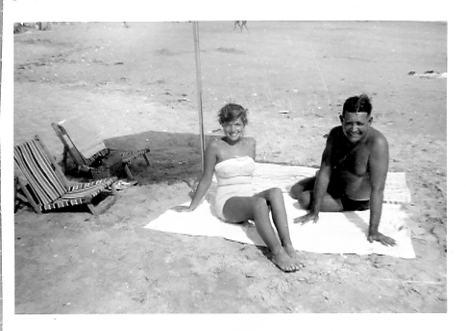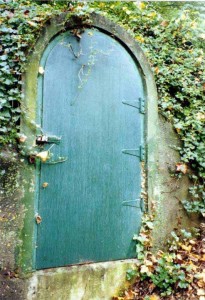September 11, 2014 — What if you handed each person in the world a guitar or a tambourine, and then asked all to play their instruments in unison, speaking as neighbors one to another. Think of the dialogue this would create. What effect would this have on the world?
Recently, I attended a dinner reception for a group of jazz musicians. When I stood up to leave, one of the musicians at the table asked me a question, and in response I began telling a story. In the middle of my story, suddenly I became aware that the musicians were looking up at me, listening with rapt attention. Was my story that fascinating? Probably not. It occurred to me that the musicians were about to go on stage and perform, and here I was performing for them. I was not the performer here; they were. I quickly wrapped up my story and left to go over to the hall where they would play that evening. On the way, I thought, musicians listen, they really listen. They have to; how else would they be able to perform together if they didn’t listen to one another? The result would be chaos. And then I realized why I have long felt that the heart of my life was when I worked at the catering/food distributing company in the 1980s. Nearly all my coworkers were musicians, and we had so much fun together – we played together – talking, joking, telling stories, laughing, singing, and always listening: we all listened to one another, accepted the other’s expression and didn’t judge. We intermeshed.
That August Saturday night of my watching all music on television, my PBS station followed John Sebastian and my folk interlude with Gustavo Dudamel: The boy who conducted his toys at age four and grew up to lead The Simón Bolívar Youth Orchestra of Venezuela, operated under the auspices of El Sistema (founded in 1975 by Venezuelan musician, educator and economist José Antonio Abreu, to take indigent children off the streets by giving them free musical instruments and lessons), today is the musical director of the Los Angeles Philharmonic and conducts great world orchestras, all with passion, exuberance, expression and joy.
Watching Gustavo Dudamel conduct, I am at once transported to 1973 when my daughter and I went to see the young Zubin Mehta conduct the L.A. Philharmonic at the L.A. Music Center performing Tchaikovsky’s fifth symphony. Zubin Mehta was extraordinary (also extraordinarily handsome, still is). When the concert ended, we in the audience stood and applauded at length. During the performance the momentarily idle violinists and cellists smiled across the orchestra to each other apparently acknowledging some string-players’ inside joke. This is the only orchestra in which I have seen members smiling. They smiled again this time under the baton of Gustavo Dudamel – who smiled, too, throughout.
To my ever-broadening grin, this Saturday evening I was privileged to watch Dudamel conducting works of George Gershwin, with Herbie Hancock on piano, in 2011 at spectacular Disney Hall, designed by maestro architect Frank Gehry, a hall where the audience sits surrounding the stage where sit the musicians. If any musician can bridge the gap between youth and popular music and the great classics, besides world renowned cellist Yo-Yo Ma, it is Gustavo Dudamel. When you watch him conduct, you know by his facial, arm and bodily expressions exactly what the composer coded and precisely what Dudamel desires to draw from the orchestra. He makes listening to music compelling and fun.
Unlike great European orchestras, comprised traditionally of mostly stodgy, gray-haired men, the L.A. Philharmonic, like the City of Angels itself, is comprised of a rich ethnic diversity, of both men and women, young and old. Even in the early days, when my daughter and I sat in the audience, we watched a conductor, Zubin Mehta, now Music Director for Life of the Israel Philharmonic, whose Parsee family had migrated from Persia to India generations back.
Yo-Yo Ma, who has performed with Mehta often, was born in Paris of Chinese parents who immigrated to the United States when Ma was 7. What an unexpected change in the architecture, observed the boy who had already been playing the cello for three years, from a city of low buildings with tile roofs, and the Eiffel Tower, to a place of square buildings, flat roofs and water towers. Yo-Yo Ma from about age 4 or 5 has always wanted to know “Who did this and why?” He considers himself both a forensic musician, therefore, and a citizen musician. “I am a musician, but what can I do with this,” he thinks. So he plays all types of music with musicians playing all variety of instruments, exemplified by his Silk Road Ensemble. He classifies classical music along with all other music genres as simply “music,” citing composers who have crossed genres such as Argentine-born Astor Piazzolla (1921-1992), a bandoneon player, who came to Harlem and whose nuevo tango/jazz compositions were influenced by the music he heard there.
Yo-Yo Ma believes that when he is performing, he is not some great and distant maestro deigning to demonstrate his musical achievements to the audience, rather, he is doing what he can do, sharing his music, that he is the host and we, the audience, are his guests. Music is what occurs between the notes, he says, as do other accomplished musicians, naming Soviet-born violinist Isaac Stern (1920-2001) and Spanish Catalan cellist Pablo Casals (1876-1973), and defines his peak experiences in music as occurring in that moment: how do you go from this note to the next, from the end of this musical section to the next, do you stop, pause, do you continue, running the notes together, do you rise in a partial tone, one note to the next? And for example, says Ma, in Bach’s Cello Suite No. 1 in G, the cellist must go on from the Sarabande (a slow dance) to the Minuet; you can’t just end with the Sarabande and leave the music hanging.
When Krista Tippett on her September 4 National Public Radio (NPR) show “On Being” asked this artist, Yo-Yo Ma, in an interview titled “Music Happens Between the Notes,” what is his definition of beauty, he responded, “Transcendence.” He said that beauty occurs at that peak moment, the moment between the notes. The Silk Road Ensemble’s new, 2013, album is titled “A Playlist Without Borders.”
Music by its very nature is transcendent; and music is transitory by its nature and by the nature of performance. So, where does music come from? When I was very young and first heard an orchestral recording, I thought music came from the spheres. Later, on television, I saw a large group of people sitting together producing those same sounds: that was an orchestra, I learned. Many years have played through the score my life and now I believe that music comes from the spheres – its creation, as with all art, and the tones and overtones produced. A violinist said that she wanted to play the violin when she heard the violin in Russian composer Nikolai Rimsky-Korsakov’s (1844-1908) symphonic poem “Scheherazade.” Rimsky-Korsakov’s “Scheherazade” is the first composition that greatly impressed me and instilled my love for classical music.
Music, as with all art, is without borders. While artists pursue their art religiously, art is not a religion; for religion implies dogma, and dogma has borders; to imply your art as religion would be to enclose yourself inside a box, wherein would cease your ability to explore new vistas of creativity.
Yo-Yo Ma and Zubin Mehta have often performed with maestro pianist and conductor Daniel Barenboim, an Israeli born in Argentina of Russian Jewish parents. Barenboim, who, when in his youth immigrated with his parents to Europe, lived and studied in Vienna, and in Paris with French musician, composer and teacher Nadia Boulanger (1877-1979). Among Boulanger’s students, who became leading composers, soloists, and conductors were Aaron Copland, John Eliot Gardiner, Elliott Carter, Dinu Lipatti, Igor Markevitch, Quincy Jones, Daniel Barenboim, Philip Glass and Astor Piazzolla.
In 1999 Daniel Barenboim with cultural theorist Edward Said (1935-2003), an agnostic born in Jerusalem, Palestine, who taught at Columbia University, formed the West-Eastern Divan Orchestra, whose home is now Andalusia, Spain, comprised of musicians from Israel, Palestine and other Arab nations, as “a means to debate the meaning of democracy and cultural identity through music,” as stated in a story about Israel on The Culture Trip.com website. Nonetheless, Barenboim and Said chose to form the Divan orchestra for humanistic rather than political reasons “on the assumption that ignorance is not a strategy for sustainable survival. Education, dialogue and understanding are at the heart of their solution.” This thought extends to relationships between individuals, obviously: it is dialogue, listening and understanding thus to reach a consonance in resolution. I paraphrase Barenboim’s recounting one Arab musician’s saying, “It’s what happens between the white and the black keys.”
In 2001 Barenboim, who holds Israeli, Palestinian, Spanish and Argentinian citizenship, stated his democratic philosophy, gaining notoriety in some circles, by conducting the orchestra before an Israel Festival audience in Richard Wagner’s Tristan und Isolde Prelude. The audience would hear Richard Wagner’s music for the first time since Kristallnacht. Barenboim’s argument proposed that breaking this 30-year ban on performing Wagner’s music in Israel would be democratic. The point of performing the Prelude is that in it partially resolved chords create tension and ambiguity, suggesting conflict solved with difficulty, which only resolve themselves in the final bars.
The orchestra was named after a collection of poems by Goethe, inspired by the Persian poet Hafiz, which deal with the idea of the Other as a manifestation or element of the Self.”
What if you handed each person in the world a musical instrument, and then asked all to play their instruments in unison, speaking as neighbors one to another…?
On this August Saturday, as I watched Gustavo Dudamel conduct “Rhapsody in Blue,” he allowed space for each instrumentalist to articulate his or her solo with expression, so we, the audience could listen and appreciate, and then as the final crescendo built, in the last two or three minutes of the composition, Dudamel opened his arms wider and wider, embracing the grand sounds, simultaneously ascending higher, onto his toes, then jumping up and down; this action transcended only by his ever broadening grin, measured by deepening dimples on each cheek, so that as the crescendo climaxed and released, I half expected him to dematerialize leaving only the Cheshire cat grin. Here is a video of this performance: https://www.youtube.com/watch?v=Q3IPut9pUZc. This is just over 41 minutes; “Rhapsody in Blue” starts at 20:15, the final theme at 34:00, and 39:00 is where Dudamel jumps up and down.
—Samantha Mozart
 Emma’s healthcare aide Daphne came by on Mother’s Day, May 13, 2012, and brought me a card. It is a pretty pink card bearing a message saying in part, “Your love is a rare and beautiful gift and there’s no one who shares it like you.”
Emma’s healthcare aide Daphne came by on Mother’s Day, May 13, 2012, and brought me a card. It is a pretty pink card bearing a message saying in part, “Your love is a rare and beautiful gift and there’s no one who shares it like you.”


































